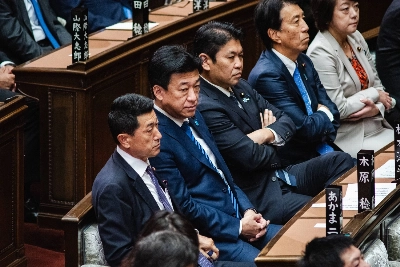The nation's current account surplus soared 51.9 percent in the first half of 2002 from a year earlier to 7.928 trillion yen, the second-largest figure for a six-month period, according to a preliminary report released Monday by the Finance Ministry.
The ministry attributed the improvement to brisk exports.
The current account surplus has been on an upward path since early this year, mainly due to an increase in exports to other parts of Asia.

















With your current subscription plan you can comment on stories. However, before writing your first comment, please create a display name in the Profile section of your subscriber account page.